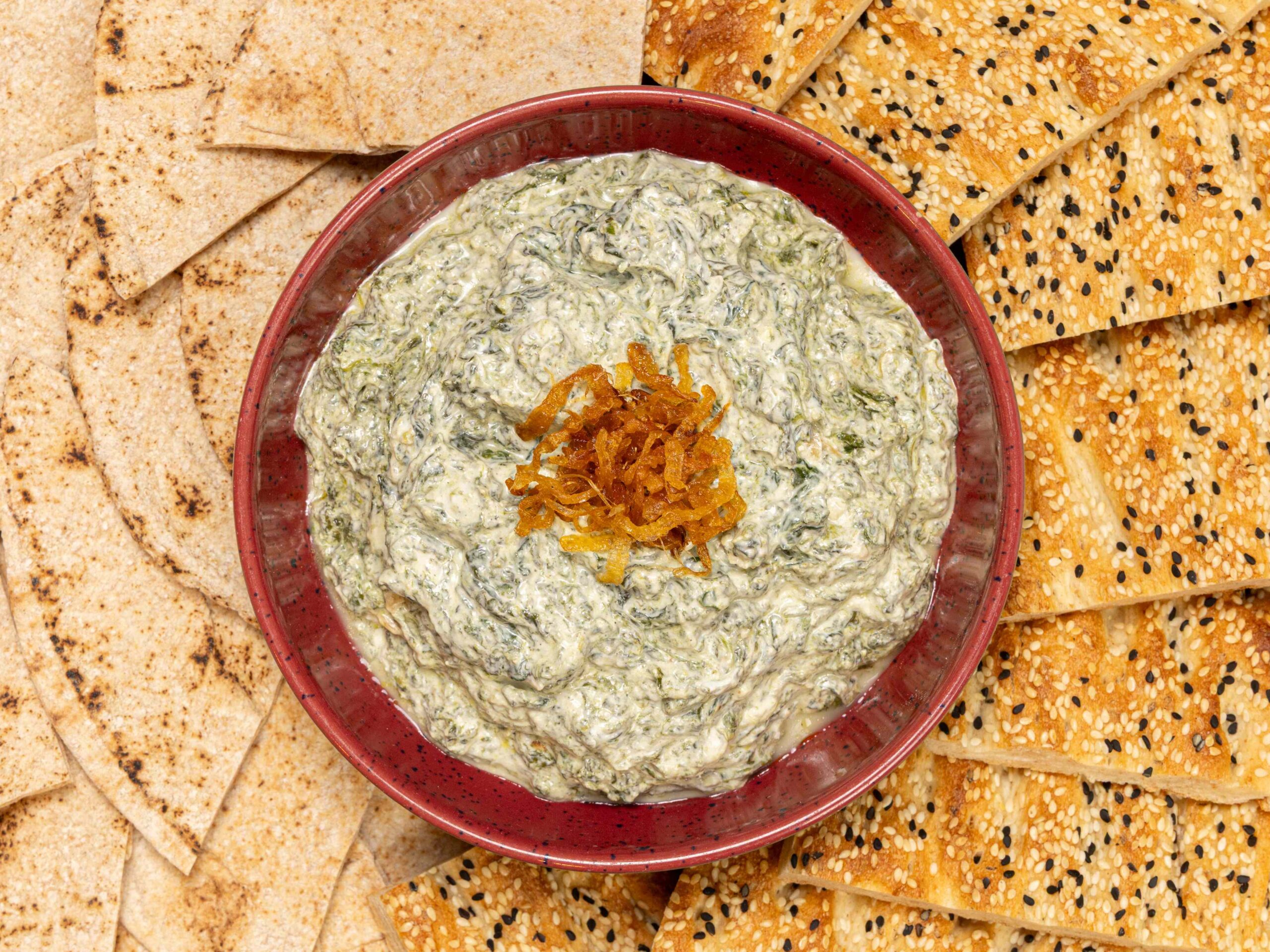:max_bytes(150000):strip_icc():format(jpeg)/2025072320250722-SEA-Borani-NaderMehravari-HERO-da62d90b2e1e42fd99e68f3aefd2fea5.jpg)
| The 7th Century CE Story The term “borani” traces its roots to the Sassanian era, around 626 CE, during the reign of Queen Pourāndokht of the Persian Empire. The queen’s fondness for yogurt led royal chefs to create numerous yogurt-based dishes in her honor, initially called “poorani.” Following the Arab conquests of Iran, the name shifted to “borani” due to the absence of the “p” sound in Arabic. |
The 9th Century CE Story The term “borani” traces its roots to Borān, wife of Abbasid Caliph Al-Ma’mun. It is believed that yogurt and vegetable dishes, particularly one with eggplants, served at her lavish 9th-century Baghdad wedding feast, became associated with her name, suggesting those creations were named and popularized in her honor. |
It is essential to note that culinary traditions evolve over time, and it is possible that both stories contributed to the development of “borani” dishes. This is especially plausible given that many 6th and 7th century Sassanian culinary practices were adopted throughout the Middle East following the Arab conquest of Iran.
Serious Eats / Nader Mehravari
The Key Ingredients in Spinach Borani
The Spinach
Spinach is an important ingredient in Persian cuisine. It is used in a wide range of dishes, including starters, side dishes, egg-based kookooss, soups, rice dishes, braises, and meat dumplings.
Interestingly, spinach’s journey began over 2,000 years ago with its first cultivation in ancient Persia. From there, it traveled eastward, reaching China in the 6th century CE via Nepal, where it earned the nickname “Persian vegetable.” Between the 9th and 11th centuries CE, spinach made its way to Europe: It was introduced to Sicily by Arabs and then spread to Spain with the Moors. By the 14th century CE, it had reached England and France, quickly gaining popularity due to its early spring harvest. Its fame was further cemented in the 16th century CE when Catherine de’ Medici, a fervent admirer, brought her love for the leafy green from Florence to France, leading to “à la Florentine” dishes. Finally, early colonists brought this versatile vegetable to the Americas.
For speed and ease, baby spinach is ideal here. It wilts quickly, and doesn’t require any chopping. If using larger, thicker-leaf spinach, simply chop it into smaller pieces. Frozen spinach works too—just thaw it first, and don’t squeeze out its excess water; that moisture helps create that creamy consistency you want in a good borani.
The Yogurt
The other main ingredient, yogurt, also plays a major role in your borani’s consistency. Strained yogurt—which is marketed as Greek yogurt in North America and Europe—yields a thicker version of spinach borani, ideal as a dip or appetizer. Regular plain yogurt creates a thinner, somewhat pourable consistency, which is better suited for serving over rice or grilled meats. Full-fat yogurts yield a richer borani, while the varying tanginess among yogurt brands will also alter the final flavor. Seek out tangy yogurt, like traditional Persian varieties. Find these at Middle Eastern or Mediterranean markets or look for specific brands such as White Moustache, Karoun, Damavand, Abali, Sadaf, Alwant, Naz, Pegah, or Diba. If using homemade yogurt, extend the fermentation time for extra sourness. Or simplyadd a splash of fresh lemon juice to less tart yogurt to increase its tanginess.
The Fried Onions
If you’re in a hurry, it is acceptable to eliminate the crispy onions from this dish, though I don’t recommend it, It’s better if you’re in a pinch to substitute store-bought fried onions. It is not absolutely necessary to freshly fry onions for this dish. Using previously fried onions—homemade or store-bought—will not diminish the character of this dish.
How Spinach Borani Is Made
In this dish—as in many other popular boranis made with eggplant, zucchini, or mushrooms—the vegetables are first sautéed in a bit of fat before being mixed with yogurt. In this recipe, the spinach undergoes gentle cooking for an extended period of time. As the embedded moisture within the spinach is released, the leaves cook gently and slowly in their own liquid, resulting in a delicate, satin-like texture. This prolonged cooking time also transforms the spinach’s initial mild, grassy flavor into a much more concentrated one by evaporating much of the liquid from the leaves. Then, after most of this exuded liquid evaporates, the now limp spinach leaves continue to be cooked until they just begin to scorch, yielding an even deeper, darker color and a delicate hint of char.
This spinach cooking method also helps eliminate the bitterness some diners associate with spinach, especially when mature leaves are used. This bitterness is primarily due to oxalates (salts of oxalic acid) naturally present in spinach leaves. These compounds act as the plant’s natural defense against herbivores ( such as insects and grazing animals) and pathogens. Their bitter flavor and the formation of calcium oxalate crystals can deter pests.
Serious Eats / Nader Mehravari
Bringing It to the Table
Spinach borani is always served family-style, either cold or at room temperature. When served at a cocktail party or as an appetizer at the dining table, it is accompanied by pieces of traditional Persian flat breads (such as lavash, Barbari, Sangak, or Taftoon). Alternatively, other types of flat bread, such as naan or pita, work well. Even some crackers will do in a pinch. If the borani is served as an appetizer, diners typically scoop up bite-size portions with bread, a hands-on approach that’s both practical and polite—no double-dipping required. When borani is served as a side dish to accompany the rest of the meal, diners typically spoon a bit of it onto their plates. When it is intended to be the central part of a simple meal, it is often accompanied by a good amount of bread.
It is not uncommon for Persian home cooks to garnish the prepared borani with a small pile of fried onions for added crunch and a touch of sweetness. Creamy and tangy from the yogurt, silky and earthy from the sautéed spinach, and topped with sweet, crispy onions, spinach borani is the kind of dish you linger over and one that goes with just about everything.
Serious Eats / Nader Mehravari
This Persian Spinach Dip Has Been Beloved for Centuries
Cook Mode
(Keep screen awake)
-
1/4 cup (60 ml) olive oilbutter, ghee, or any other cooking oil of your choice (see notes)
-
1 small yellow or white onion (about 4 ounces; 115 g), very thinly sliced
-
1 pound (450 g) baby spinach leaves (see notes)
-
2 cups plain full-fat regular or strained yogurt (16 ounces; or 454 g)(see notes)
-
3 cloves of garlicminced
-
1 1/2 teaspoons freshly ground black pepper
-
1 teaspoon Diamond Crystal kosher salt; for table salt, use half as much by volume
-
Line a large plate with paper towels and set aside. In an unheated large stainless steel skillet, combine oil, butter, or ghee and sliced onions. Cook, over high heat, stirring frequently, until mixture begins to bubble, 2 to 3 minutes. Reduce heat to medium and continue cooking, stirring frequently, until onion is pale yellow, 5 to 6 minutes. Continue cooking, stirring constantly, until onion is light golden brown, 1 to 2 minutes. Using a slotted spoon, quickly transfer fried onions to prepared plate. Don’t discard excess oil in skillet.
Serious Eats / Nader Mehravari
-
Add about 1/4 of spinach to oil in skillet, cook over medium heat, stirring occasionally, until spinach just begins to wilt, about 1 minute.
Serious Eats / Nader Mehravari
-
Add another 1/4 of spinach on top of cooked spinach. Cook, stirring occasionally, until new spinach portion is wilted, about 1 minute more. Continue with remaining two spinach portions; continuing to pile the portions on top of each other.
Serious Eats / Nader Mehravari
-
Continue to cook spinach, stirring occasionally, allowing it to cook gently in its own liquid, until most of the moisture has evaporated, about 5 minutes.
Serious Eats / Nader Mehravari
-
Continue cooking spinach leaves, stirring occasionally, until they are just beginning to toast and char, about 10 minutes.
Serious Eats / Nader Mehravari
-
Off heat, stir in about 3/4 of the previously fried onions into spinach. Let cool in skillet for 30 minutes.
Serious Eats / Nader Mehravari
-
Stir in yogurt, garlic, pepper, and salt, cooled spinach-onion. Mix well to combine. Cover and refrigerate for at least 30 minutes to allow the flavors to meld. Transfer to a serving bowl and top with remaining crispy onions. Serve with flatbread or crackers for scooping or as a side with grilled meats, rice dishes, kookoo-sabzi, or kotlets.
Serious Eats / Nader Mehravari
Special Equipment
Large stainless steel skillet
Notes
This recipe can serve 2 for a light meal, or up to 8 as a shared appetizer.
About 1/3 cup of store-bought or previously fried crispy onions can be used instead of frying the onions. If using store-bought or previously fried crispy onions, skip ahead to step 2 and begin by heating 2 tablespoons of oil or other fat until shimmering before adding the spinach.
You can substitute one 12-ounce package of frozen spinach leaves for 1 pound of fresh spinach. If using frozen spinach, thaw completely before using, and do not squeeze out excess moisture. Skip the spinach wilting steps and add all of the thawed spinach to the skillet immediately after frying the onions.
If preferred, substitute the baby spinach with 1 pound of regular spinach—just be sure to chop it into smaller pieces first.
Using strained yogurt, such as Greek, will yield a thicker borani that’s ideal for dipping, while regular (unstrained) yogurt will produce a more pourable version, perfect as a sauce alongside rice or grilled meats. If possible, seek out tangier varieties like White Moustache, Karoun, Damavand, Abali, Sadaf, Alwand, Naz, Pegah, or Diba—brands often found in Iranian, Armenian, and Middle Eastern grocery stores. Alternatively, add a small splash of fresh lemon juice to plain yogurt to approximate the flavor of traditional Persian yogurt.
Borani can be made with vegan yogurt substitutes including soy, coconut, almond, cashew, and oat yogurts. My favorite vegan yogurt substitute is almond-based yogurt, which offers a lighter but nuttier flavor.
Make-Ahead and Storage
Cooked spinach without the final onion garnish can be frozen in an airtight container or freezer bag for up to 3 months.
Spinach borani can be made up to two days in advance and stored in an airtight container in the refrigerator. Leftovers can be safely stored in an airtight container in the refrigerator for up to 4 days.

